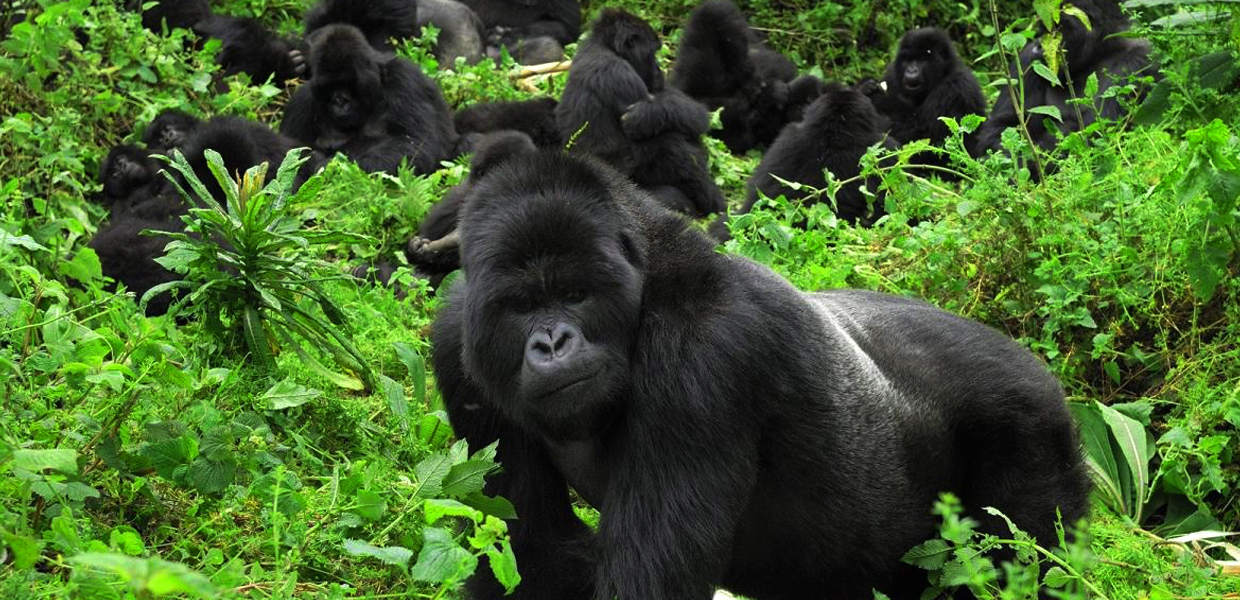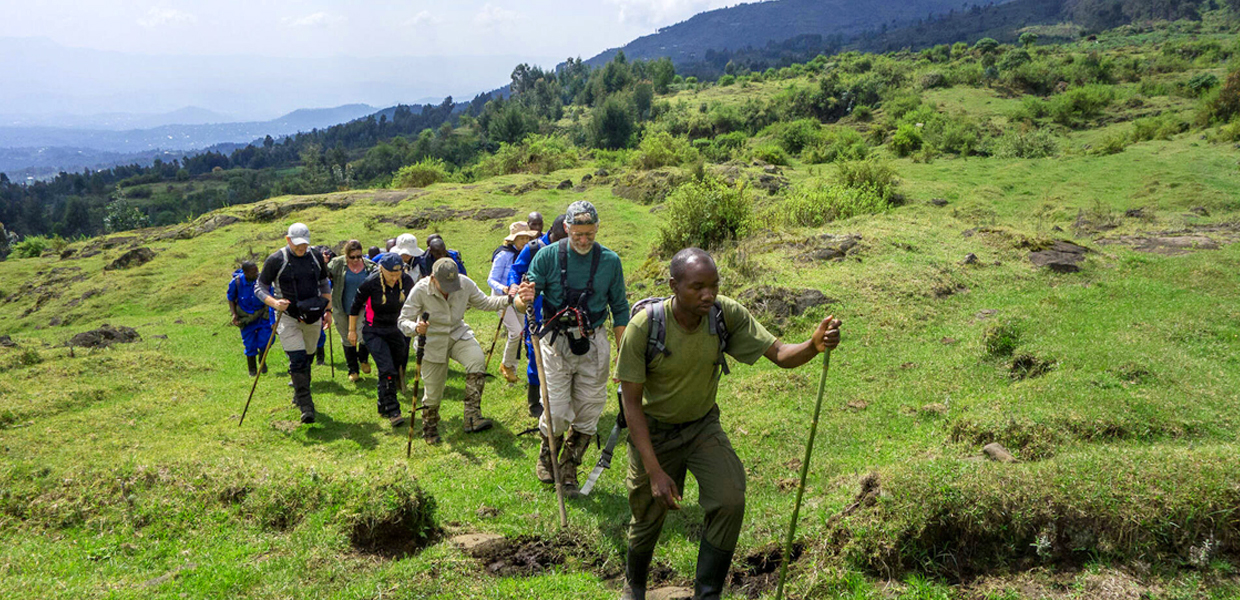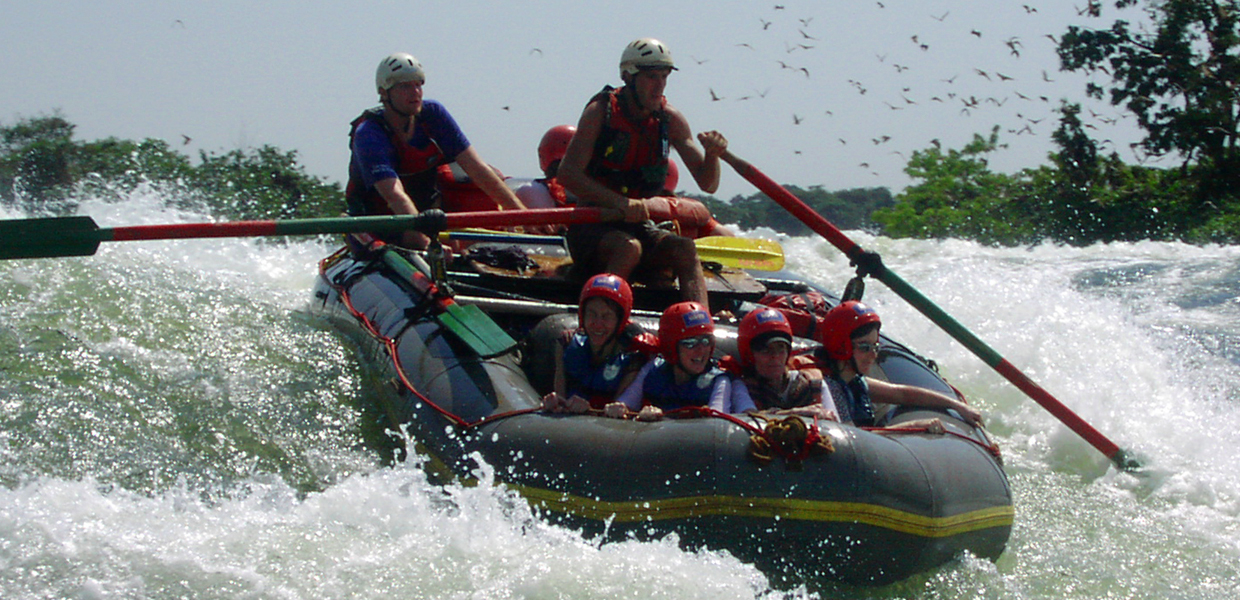
Uganda Gorilla trekking is an experience that every primate lover ought to enjoy during African safaris and it is for a good reason. This small land-locked country, set on the Eastern side of Africa is home to half the World’s population of mountain gorillas, and getting up close with them is one of the most extraordinary wildlife encounters on the African Continent. Getting the chance to meet face to face with these Giant Apes in their natural habitat is rare, but once you do, you will be directly supporting conservation efforts as well as facilitating their population growth.
Send enquiry for this experience
Mountain gorillas, scientifically referred to as “Gorilla beringei beringei are huge, broad-chested, and thickly-furred Great Apes with broad faces. These are sub-species of the Eastern gorillas and live in the mountainous as well as sub-alpine vegetation. Unlike other gorilla sub-species, the mountain gorillas only live in the wild owing to their restricted diet (bamboo shoots, leaves, stems, barks, and roots of about 140 plant species as well as wild celery and vines.
These creatures are generally social beings that live in families of five to thirty individuals, and each family has at least one silverback (mature male from the age of 13 years marked by a silver saddle on the back to the hip). There are also adult females, infants, and juveniles in the family, and are led by a dominant silverback.
Where to undertake Gorilla trekking in Uganda
Two wonderful National Parks provide the opportunity of enjoying Uganda Gorilla trekking experiences and they are Bwindi Impenetrable and Mgahinga Gorilla National Parks.
The former is so far the best and most renowned gorilla trekking destination in the country with almost half the population of Mountain gorillas in the World and about 458 individuals (according to the last census of 2018). This Park’s 20 habituated gorilla families live in four wonderful sectors/trekking regions- Rushaga and Nkuringo on the southern side, Ruhija on the Eastern side, and Buhoma on the Northern side.
For the 20 habituated gorilla families in Bwindi, it means a total of 160 gorilla permits are issued each day and the choice of the sector to visit will also determine the accommodation facilities to book. Get in touch with Ibuth safaris for your Uganda gorilla trekking safaris.
Mgahinga like Bwindi Impenetrable National Park is located on the south-western side of Uganda but is part of the greater Virunga Conservation Area (that also comprises of Virunga National Park in the Democratic Republic of Congo and Volcanoes National Park in Rwanda). This Park is home to only one habituated gorilla family named “Nyakagyezi” hence its unpopularity among gorilla trekkers.
Only 8 gorilla permits are issued each day for this Park but travelers also have chances of undertaking golden monkey tracking and Virunga Volcano hiking. Whether you choose Bwindi or Mgahinga, gorilla treks are led by experienced Ranger guides attached to the Uganda Wildlife Authority and with their experiences of leading these gorilla treks, they are conversant with the forest ecology, changing landscapes and mountain gorilla behavior.
Send enquiry for this experience
How Gorilla treks are conducted in Uganda
Gorilla trekking tours depart daily from the Park Headquarters and normally start at 7:00am with briefing of visitors on the guidelines to be followed during trekking. After this briefing, visitors are then allocated to gorilla families depending on their personal interests, age and level of physical fitness.
Each group comprises of 8 visitors and this limit is essential for safeguarding the Mountain gorillas against any possible air-borne pathogens as well as reducing behavior changes. Physical fitness is definitely required for taking on the densely forested mountain slopes marked rugged terrains, craggy valets, muddy and slippery slopes and thick vegetation. This is never an easy one to three-hour trek but the reward is always priceless. Once the mountain gorillas are spotted, visitors are allowed to spend one hour watching and photographing them as they go about their normal lives as if there is no one around them.
Guidelines to follow while tracking mountain gorilla in Bwindi and Mgahinga National Park
Mountain gorillas are closely related to humans and this makes them vulnerable to many human diseases especially flu and cough, and regardless of the fact that they are first habituated to make them used to human presence, they will always be wild animals hence care has to be exercised while trekking and watching them. Therefore, these are the guidelines to follow during mountain gorilla trekking;
- Avoid visiting mountain gorillas if you are sick with cough, flu, Covid-19, measles and Tuberculosis as these diseases can adversely affect them than it does to us.
- Turn your mouth away from the mountain gorillas while sneezing.
- You have to be of legal age (at least 15 years) before visiting the mountain gorillas.
- You will be given only one hour to watch and photograph the mountain gorillas and please, always abide by this time to prevent behavioral changes.
- Only 8 visitors are allowed to trek a habituated gorilla family and for this reason, avoid joining families you were not allocated to.
- Making noise while tracking mountain gorillas is likely to scare away other creatures in the forest hence should be avoided.
- A minimum distance of 8 meters has to be maintained while watching and photographing mountain gorillas.
- Littering the forest isn’t allowed because rubbish obviously degrades the natural environment but can cause choking of mountain gorillas and lead to spread of diseases.
Send enquiry for this experience
Permit prices for Uganda Gorilla trekking
Uganda Gorilla permits are charged based of visitor’s residence status, whereby the foreign non-residents pay $700 per person, the foreign residents (with valid working permits to prove residence in Uganda) pay $600 per person per trek, while the East African Community (Uganda, Rwanda, Kenya, Tanzania and Burundi) residents pay Shs. 250,000 per person per trek. The low season gorilla permits are no longer issued and given the high demand for these permits, it is always advised to book your gorilla safari/ or the permits in advance (3-4 months early for the low season and 6 months to one year for the peak season) to avoid being disappointed.
When is the perfect time Gorilla trekking in Uganda?
Uganda generally experiences an equatorial climate and for this reason, temperatures remain slightly constant throughout the year. Precipitation levels however vary between reasons whereby the months of March, April, May, October and November receive heavy rains. They are always avoided by most travelers because forest trails get muddy, messy and slippery.
The months of January, February, June, July, August, September and December are always preferred because rainfall levels are reduced (but not totally absent) and this means forest trails are drier, not muddy or slippery. However, mountain gorillas can be trekked all year round.
What to carry for Uganda Gorilla trekking
Mountain gorilla trekking involves walking through dense rainforests and mountainous slopes and for this reason, it is always recommended to carry sturdy hiking boots with ankle support, long-sleeved shirts, safari hat, lightweight rain jacket, lightweight and waterproof safari pants, a backpack, gardening gloves, garters/long socks, camera with rainproof covering, insect repellant, and so much more.
Getting to Bwindi or Mgahinga for Gorilla trekking
Bwindi and Mgahinga National Parks are both in south-western Uganda and are reachable via air and road. Road transfers normally begin from Entebbe or Kampala and last 8-9 hours marked by beautiful sceneries of the rolling hills, vast plantations of bananas and tea and winding roads.
It takes only one and a half hours’ flight to get to Kihihi and Kisoro Airstrips then another one hour or more to get to the Parks. For visitors tracking mountain gorillas at Buhoma and Ruhija sectors of Bwindi, flights land at Kihihi and will take another one and a half hour to reach Bwindi. For the southern sectors (Nkuringo and Rushaga) and Mgahinga Gorilla National Park, flights can land at Kisoro airstrip.



